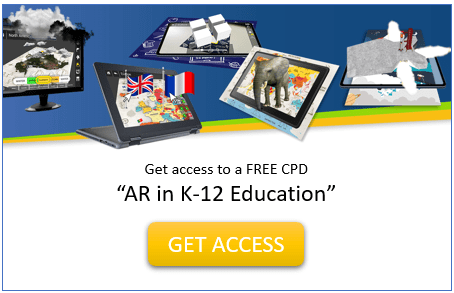
Estimated reading time: 2 minutes
The education industry is gaining strong traction with emerging technologies such as Augmented and Virtual reality. In university, buzz words became more practical tools for studying different subjects and working on complex projects. This is because visual representation of information becomes the key to successful information retention.
The applications of AR and VR are booming through multiple mobile apps and desktop applications. Year on year they blow our minds as consumers with creative features, creative approaches and adaptability to existing hardware. This supports the adoption of technologies in a big way.
Educators envision a lot of potential in AR and VR. They expect a wider application of these technologies and its contribution to the break-through solutions based on well-known tech that has been available for decades.
The prospects of AR and VR
Since Augmented Reality does not require glasses or goggles, it has a better adaptability rate. Moreover, a user can explore the possibilities of a web-based AR if a mobile device is not available. Augmented Reality will connect the real world and overlay with an imaginary or drawn 3D world. This will support clear identification of realities and creates a new user experience for information exploration. Certain Augmented Reality tools allow users to explore and create their own AR worlds, quests, and scenes using a mobile app or a web-based option.
In contrast, Virtual Reality is more complex and requires specific hardware to use virtual worlds. There are tools that allow creation of virtual worlds through a desktop app and further exploration through VR headset. The big challenge with VR is cost and time. However, the industry is growing currently. Hopefully soon enough there will be more hardware at affordable prices available for a wide range of users.
Due to Covid-19, our lives became digital and AR / VR technologies enabled multiple industries, including education. The pandemic provided a unique opportunity to test and use cutting-edge technology. It supports innovative approaches to K-12 education, promoting progressive education with the goal of developing 21st century skills for the next generation. AR and VR are the components that support education at multiple levels of curriculum adoption, skills development, information provision, etc.
Practical application of AR and VR in education
Furthermore there will be a more disruptive approach to learning with Augmented and Virtual Realities that can entail multiple applications:
- Augmented Reality in school books can be one of the easiest examples where books can be equipped with additional personalized learning modules simply anchored to the images inside well-known textbooks.
- AR+VR=MR or XR and the objective of using both is to make education fun and memorable. The interactive nature of such technologies allows users to learn and retain what they have learned.
- A personalized approach and support for different learning styles will become more popular in the coming years. Learning personalization helps in efficient information retention and XR technologies are of immense help.
What are your thoughts on using XR in education? Learn more about AR Teaching: CleverBooks for Educators

